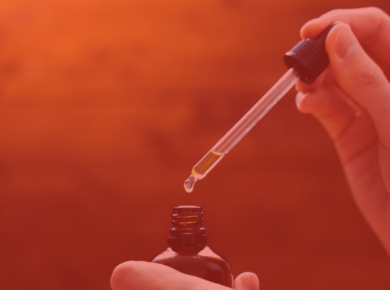The term hydroponics is relatively new, but the growing technique of replacing soil-based systems with nutrient-rich water goes as far back as the Hanging Gardens of Babylon.
Cannabis can also be grown using this efficient procedure. Hydroponics by removing the use of soil and its sporadic nutritional control and replacing it with an endless stream of beneficial nutrients delivered in water.

How Does Hydroponics Work?
There are multiple ways of growing cannabis hydroponically. Basic hydroponic setups consist of a growing tray that is constantly being supplied with pH balanced and nutrient-rich water from its main water reservoir. A return pipe to the same water tank is also connected to avoid the tray from filling up and drowning the plant.
One of the most important aspects to consider when growing cannabis hydroponically is that the roots also need a regular fresh supply of oxygen.
For this reason, the last crucial part of any basic hydroponic growing system is an airstone. Once connected to an air pump and placed inside the main water reservoir, the airstone creates dissolved oxygen with its bubbles that help provide more oxygen to the roots of the plant.
Apply to be a member of Kush.com today!
More complicated hydroponics methods automize most of these processes with state-of-the-art technology that specializes in growing without soil.
How Do the Plants Feed?
The roots of the plant hang with freedom thanks to the lack of soil. This enables the upper part of the root system to have a continuous and fresh supply of oxygen. The bottom part of the roots is always exposed to a nutrient solution allowing the roots to expand with freedom and the plant to feed.
By controlling every aspect of the growing environment and choosing when to feed the plants, growing with hydroponics can help the plant avoid going into a state of chlorosis and most importantly, necrosis.
Nutrient deficiency in the plant can be avoided by always using the correct amounts of mineral elements and following the specific nutrient mixing procedure when preparing the water for the main tank.
Calcium is one of the many essential macronutrients used for cell growth, and chlorine is an example of a micronutrient used in trace amounts that aids the roots to grow faster and stronger.
Each of the many nutrients used to enhance this growing procedure needs to be mixed in the correct order making sure the plant receives the proper balance and ratios. Insufficiency or an abundance of either can cause the plant to go into necrosis.
Finally, and equally as important as the previous steps are that the pH levels need to be maintained at the optimal level. Frequently adjusting the levels as they react to the incoming nutrients is a standard procedure that needs be done regularly.
This calculated and efficient blend of nutrient-rich water needs to be switched out and replaced with a fresh mix at least once every fourteen days. In the meantime, the plants are usually flushed with pure water as the system is leached of any unwanted remaining water. Leeching the system with straight pH balanced water also removes any build up of toxic salt.
What Makes Hydroponics Better?
The constant and calculated feeding hydroponics provides the cannabis plant can amplify plant growth in a more controlled environment. Furthermore, it makes it easier to monitor any negative symptoms evolving in the plant.
Some people theorize that growing plants without soil is healthier for the plant and can be extremely beneficial in preventing any pets or plant diseases.
Naturally occurring species that are considered pests typically live in soil and hydroponic cultivation has the benefit of not using soil. By maintaining a highly sanitary growing environment with active ventilation that is always at the correct temperatures, undesired pest outbreaks are much less frequent and plant diseases can be easily eradicated.
This maximum control over nutrition also proves favorable in promoting year-round intense plant growth in much less space required than standard growing procedures.
Additionally, this method of growing plants also has a substantial amount of eco-friendly advantages over more traditional growing techniques. In most cases after each harvest, soil depleted of its natural nutrients is usually replaced or heavily fertilized. This is a colossal waste of resources that creates more pollution.
Apply to be a member of Kush.com today!
Reusing old soil with low fertility is a terrible idea for growing high-quality terpene rich cannabis; a significantly reduced harvest size and an abundance of harmful pests will be the outcome.
Hydroponics eliminates most of these traditional growing problems while managing to deliver a precise and constant flow of nutrients to the plant. There is no surprise why this unique way of growing was chosen by one of the Seven Wonders of the Ancient World.
Without the need to guess or estimate the exact ammonium to nitrate ratios and the fact that its growing mediums can be recycled, hydroponics can be a far superior choice for growing terpene rich cannabis that is pesticide free and environmentally friendly.






